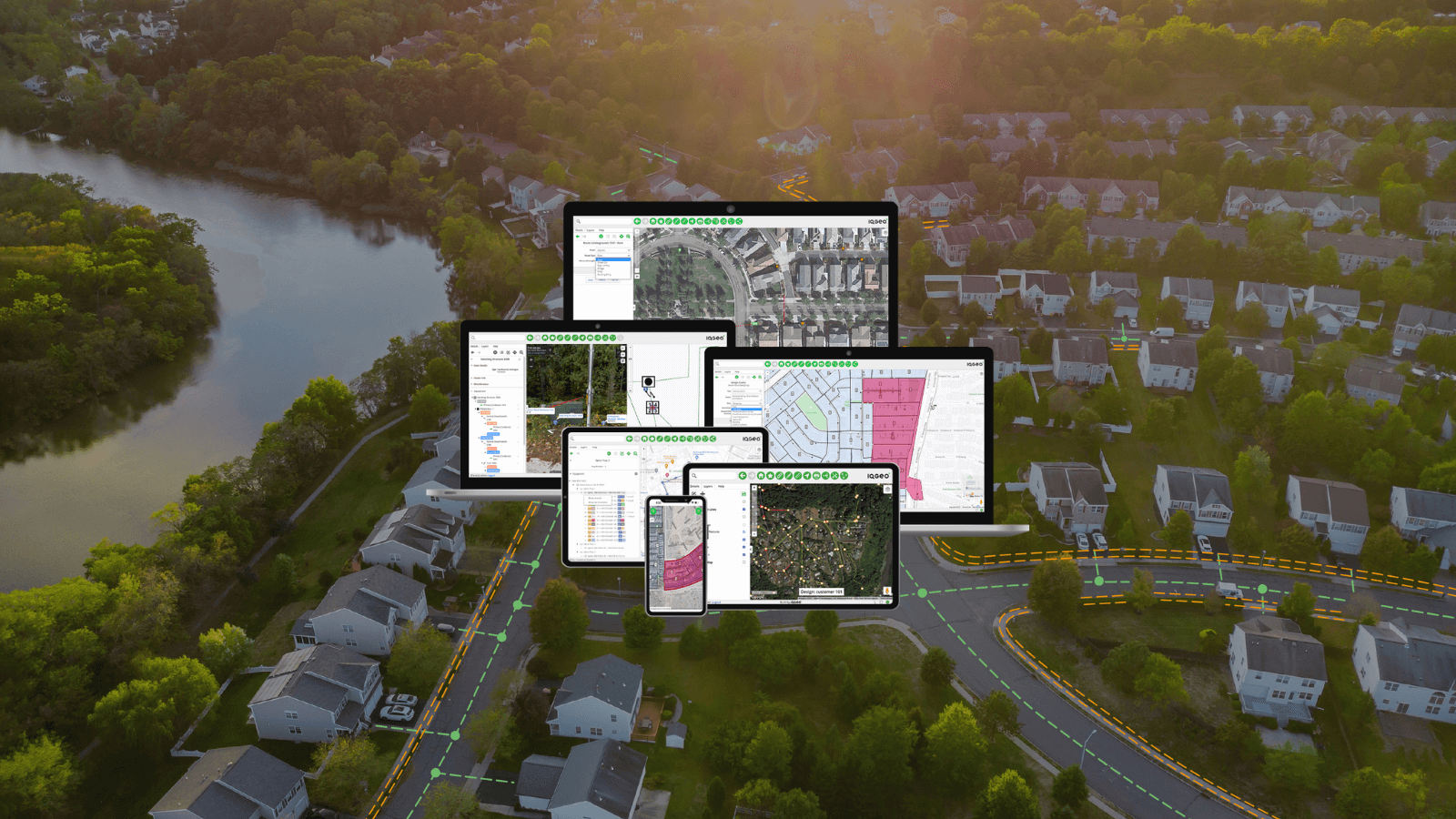The telecoms industry is going through a major digital transformation. From modernizing their products and services to transforming networks and infrastructure, the principle driver for network operators is to provide new and higher quality services in an extremely competitive landscape. In an industry where customer loyalty is constantly at risk, delivering high levels of customer service is of paramount importance to remain competitive and meet revenue targets.
IQGeo has partnered with TechPros.io to find out how network providers are navigating their digital transformation in an increasingly customer-centric business landscape. Though a series of interviews with CDOs, CIOs and CTOs at some of the top telecoms firms across North America and Europe, we’ve discovered how they are meeting their business objectives, embracing market disruption and managing operational challenges in a highly competitive and constantly changing industry.
In the course of our interviews, three key themes emerged
1. Meeting business objectives: Customer focused KPIs that drive business digital transformation success
2. Making the most of market disruption: 5G, IoT and the demand for a real-time asset visibility
3. Managing operational challenges: Improving data quality, reducing update backlogs, reducing total cost of ownership
1. Meeting business objectives: Customer focused KPIs that drive business digital transformation success
For telecoms today, if you don’t please your customers, one of your competitors will. To monitor customer satisfaction accountability, operators are commonly including customer satisfaction scores like NPS (Net Promoter Score) as part of a broader set of KPIs.
Lucy Lombardi, SVP for Digital and Ecosystem Innovation at TIM, explains how they are increasingly realizing the importance of listening to the needs of customers and developing technology accordingly. “Customers are our centre” she said.
From a customer experience perspective, providing high performance next-generation networks is vital. Fred Lutz, SVP at Wave Broadband believes that, as long as people are dependent on internet connectivity, mitigating and responding to network operation issues will be the cornerstone of customer experience.
It is also important to have the right technology in place. “What really strikes us, and what strikes our customers, are the endless possibilities that we have,” said Bernd Meurer, BT Group CTO. He says that once the basic infrastructure is installed and connected, the platform is then fully software driven. This basically means that they can rollout functionality, within minutes, for every customer and for every geography.
Creating happy customers is seen a fundamental driver for the entire business.
2. Making the most of market disruption: 5G, IoT and the demand for a real-time asset visibility
Many businesses see technology disruption as a negative thing, but in our new customer-centric world it should be embraced as an opportunity to meet and exceed customer expectations. Market disruptors like 5G and the Internet of Things (IoT) provide the potential to offer amazing new services that will transform our communities and the lives of their customers, while driving great NPS and revenues.
“2019 is the year of 5G deployment. We foresee very tight competition within the 5G space during 2019”, said Lucy Lombardi, SVP for Digital and Ecosystem Innovation at TIM.
Nuno Sousa, Veon’s Group Director for Digital Integration, shares this sentiment, stressing that the biggest challenges relating to 5G will be cost related. “To leverage a proper 5G network, you will need to have an aggressive strategy. You will need to go to areas that you have never been to before. You must understand all the different aspects of the different ecosystems. Truly, the numbers are insane.”
“We’re trying to provide unlimited bandwidth, not just for personal users with smartphones who want to download content, but also to allow machines to talk to other machines,” adds Bill Barnett, VP of Assets and Network Performance at Crown Castle.
Building a culture that embraces innovation will make the difference between success and failure.
3. Managing operational challenges: Improving data quality, reducing update backlogs, reducing Total Cost of Ownership
As network providers come to realise that these digital disruptors demand new strategies, they will have to reimagine legacy infrastructure and technology. Their network assets are becoming more and more distributed and are being pushed further to the edge of the network where real-time asset visibility is mission critical.
Most of those surveyed for this latest eBook agree that major migration projects for legacy GIS are costing their organizations significant amounts of capital, resources and time. Most also admitted that their current GIS is not fit-for-purpose when it comes to handling next generation network requirements. Many of these business leaders plan to deploy a new GIS or are considering major system upgrades in the next few years.
A lot of the systems that we were using in the past are incompatible with newer, higher resolution systems, says Konstantinos Chalkiotis, Deutsche Telekom’s VP for Access and Home networks. And when your new system doesn’t integrate with your old system, chances are that you’ll have a whole lot of data that you can’t use.
Having the right data and a single pane of glass to view all of this information is imperative, says Bill Barnett, VP of Assets and Network Performance at Crown Castle. Consider that there are engineers, vendors, operational staff and finance teams working on any single rollout project at any given time. “That, to me, is the most critical thing; that we all have the same tangible picture. Only certain people should be able to update the data, but everyone must have the capability to see it live, at the same time.”
Deploying software that delivers a real-time view of all your assets at the edge of the network is essential to any digital transformation vision.
Turning point for the industry
For these telecom leaders, it is clear that focusing on the customer is vital to business success. There is a widespread realization that siloed network models, legacy infrastructure, unreliable data and fear of automation and digital innovation can no longer be tolerated. They are all barriers to digital transformation and future success.
Network operators are now at a major technology and operational turning point. Do they continue along the same path, or do they totally reimagine their operation with a new customer-centric perspective to ensure the long-term success of their business?
Download our full eBook now to find out more about how these telecoms leaders are tackling their digital transformation challenges.
Former Head of Marketing Communications at IQGeo
Similar articles:


 Previous
Previous







